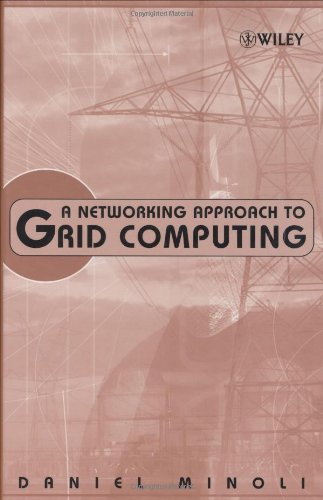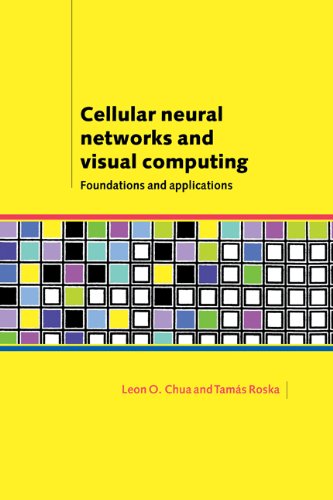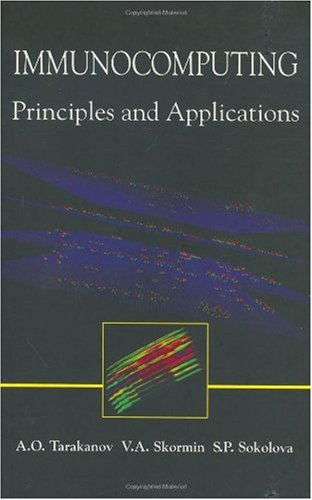Daniel Minoli9780471687566, 0-471-68756-1
Table of contents :
Contents……Page 8
About the Author……Page 14
Preface……Page 16
Acknowledgments……Page 18
1.1 What Is Grid Computing And What Are The Key Issues?……Page 20
1.2 Potential Applications and Financial Benefits of Grid Computing……Page 29
1.3 Grid Types, Topologies, Components, and Layers¡ªA Preliminary View……Page 32
1.4 Comparison with Other Approaches……Page 40
1.5 A First Look at Grid Computing Standards……Page 43
1.6 A Pragmatic Course of Investigation……Page 46
2.1 Motivations for Considering Computational Grids……Page 50
2.2 Brief History of Computing, Communications, and Grid Computing……Page 57
Communication……Page 63
Computation……Page 65
Grid Technology……Page 66
2.3 Is Grid Computing Ready for Prime Time?……Page 67
2.4 Early Suppliers and Vendors……Page 70
2.5.1 Possible Economic Value: One State¡¯s Positioning……Page 72
2.6 Challenges……Page 75
3.1 Overview……Page 82
3.2 Basic Constituent Elements¡ªA Functional View……Page 90
The Grid Security Infrastructure: User Security Function/Functional Block……Page 94
Broker Function/Functional Block and Directory……Page 95
Scheduler Function/Functional Block……Page 96
Job Management And Resource Management Function/Functional Block……Page 97
Resources……Page 98
Protocols……Page 99
Networks……Page 100
Computation……Page 103
Storage……Page 104
Scientific Instruments……Page 109
3.4 Basic Constituent Elements¡ªService View……Page 110
4 Standards Supporting Grid Computing: OGSI……Page 120
4.1 Introduction……Page 123
4.2 Motivations for Standardization……Page 128
4.3.1 Definitions……Page 132
4.3.2 Protocol Perspective……Page 134
4.3.3 Going From ¡°Art¡± To ¡°Science¡±……Page 142
4.4 What is OGSA/OGSI? A Practical View……Page 144
4.5.1 Key Aspects……Page 148
4.5.2 Ancillary Aspects……Page 151
4.5.3 Implementations of OGSI……Page 155
4.6.1 Introduction……Page 158
4.6.2 Setting the Context……Page 159
4.6.4 WSDL Extensions and Conventions……Page 164
4.6.5 Service Data……Page 165
4.6.6 Core Grid Service Properties……Page 168
4.7.2 Outsourcing Trends……Page 170
5 Standards Supporting Grid Computing: OGSA……Page 174
5.1 Introduction……Page 175
5.2 Functionality Requirements……Page 177
5.2.1 Basic Functionality Requirements……Page 178
5.2.2 Security Requirements……Page 179
5.2.3 Resource Management Requirements……Page 180
5.2.4 System Properties Requirements……Page 181
5.2.5 Other Functionality Requirements……Page 182
5.3 OGSA Service Taxonomy……Page 183
5.3.1 Core Services……Page 185
5.3.2 Data Services……Page 187
5.3.3 Program Execution……Page 188
5.4 Service Relationships……Page 192
5.4.1 Service Composition……Page 193
5.4.2 Service Orchestration……Page 194
5.4.4 Platform Services……Page 195
5.5.1 Handle Resolution……Page 196
5.5.3 Service Groups and Discovery Services……Page 197
5.5.5 Transactions……Page 199
5.5.6 Metering Service……Page 200
5.5.9 Billing and Payment Service……Page 201
5.5.11 Distributed Logging……Page 202
5.5.12 Messaging and Queuing……Page 203
5.5.13 Event……Page 205
5.5.14 Policy and Agreements……Page 206
5.5.15 Base Data Services……Page 207
5.5.16 Other Data Services……Page 209
5.5.17 Discovery Services……Page 210
5.5.19 Reservation Agreement Service……Page 211
5.5.22 Open Grid Services Infrastructure……Page 212
5.5.23 Common Management Model……Page 214
5.6 Security Considerations……Page 215
5.7 Examples of OGSA Mechanisms in Support of VO Structures……Page 216
6.1 Generic Implementations: Globus Toolkit……Page 220
6.1.1 Globus Toolkit tools and APIs……Page 222
6.1.2 Details on Key Tookit Protocols……Page 226
6.1.3 Globus Toolkit Version 3……Page 232
6.1.4 Applications……Page 235
6.2.1 Introduction……Page 236
6.2.2 Portal Services……Page 238
6.3 Basic Grid Deployment and Management Issues……Page 239
6.3.2 Business Grid Types……Page 240
6.3.3 Deploying a Basic Computing Grid……Page 242
6.3.4 Deploying More Complex Computing Grids……Page 243
6.3.5 Grid Networking Infrastucture Required for Deployment……Page 245
6.3.6 Grid Operation¡ªBasic Steps……Page 249
6.3.7 Deployment Challenges and Approaches……Page 250
6.4.1 Basic Approach and Mechanisms……Page 253
6.4.2 Additional Perspectives……Page 255
6.4.3 Conclusion……Page 268
7 Grid System Economics……Page 270
7.1 Introduction……Page 272
7.2.1 Introduction……Page 274
7.2.2 Overview……Page 275
7.2.3 The Chargeable Grid Service (CGS)……Page 277
7.2.4 The Grid Payment System……Page 286
7.2.5 GPSHold Service……Page 293
7.2.6 The Grid CurrencyExchange Service……Page 294
7.2.7 An Example……Page 296
7.2.8 Security Considerations……Page 299
8.1 Introduction and Positioning……Page 300
8.2 SAN-Related Technology……Page 303
8.2.1 Fibre Channel Technology¡ªNative Mode……Page 304
8.2.2 Fibre Channel Technology¡ªTunneled Modes……Page 317
8.3 LAN-Related Technology……Page 321
8.3.1 Standards……Page 322
8.3.2 Key concepts……Page 326
9.1 Multilink Frame Relay……Page 332
9.1.1 Motivations and Scope……Page 334
9.1.2 Multilink Frame Relay Basics……Page 338
9.2 MPLS Technology……Page 340
9.2.1 Approaches……Page 341
9.2.2 MPLS Operation……Page 343
9.2.3 Key Mechanisms Supporting MPLS……Page 347
9.2.4 Service Availability……Page 351
10 Communication Systems for Global Grids……Page 352
10.2 The Layer 3 Approach……Page 353
10.3 Layer 2 MPLS VPNs-A Different Philosophy……Page 355
10.4 Which Works Better Where?……Page 356
10.5 A Grid Computing Application……Page 357
References……Page 358
Glossary……Page 372
Index……Page 384







Reviews
There are no reviews yet.